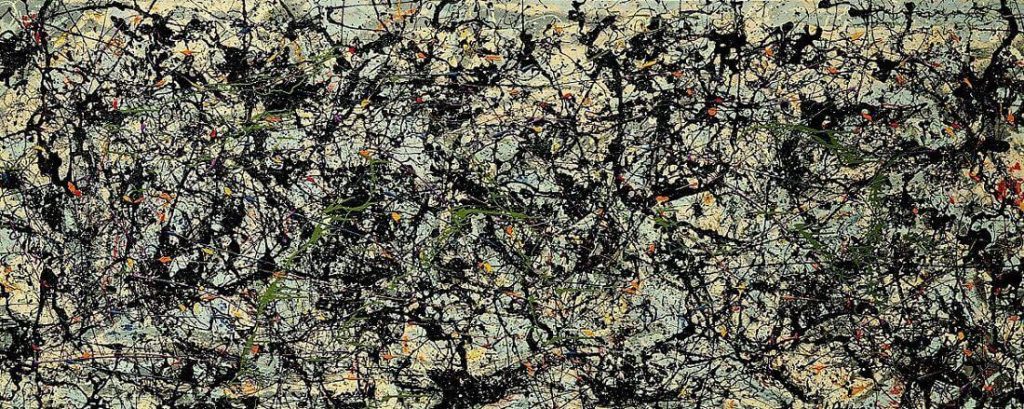JACKSON POLLOCK
Hans Namuth’s film. link 10
Makes me aware of how the film is a medium by showing the process of Pollock’s making, made the general public aware of how he works and in that way made the work accessible in 1951, as well as presenting an idea that art is a performance, it is as if these works will be remembered as ‘acts’ (spectacle?) and not for a subject or representation. The radical processes in his work were, working on the floor, the huge scale of his canvases, his use of household paints, and ‘giving’ the painting a life of its own by his drips and ‘space drawing’. I view this control as not in his hands only as he worked with less fear, something I would now consider a New Materialist idea as well as openness or awareness to ‘the other’ and authority. (he talks about losing himself in the painting) His lines can be seen as autonomous. Using glass as a medium was interesting as one could feel/see the process so much better.
In a Moma article on Cezanne, I read that Kadinsky referred to Cezanne as “making a living thing out of a teacup—or rather in a teacup he realized the existence of something alive.” (Moma online article) After reading and viewing the work of Cy Twombly I am considering that Humanist ideas could also be at play. One also thinks about Paul Klee’s ‘taking a line for a walk’.
I value that Pollock’s gestural lines is based upon an activity and becomes traces of movement and gesture. I do view his work as an exercise of the unconscious, but believe that his public persona after becoming famous for his radical ways and controversial personality, made his art less meaningful but him as a person more influential. I beleive it made people more opinionated and focussed on process of making. I see that when I attempted his style one has to be forceful and can easily overwork a piece, so that it becomes muddy. Pollock to me was a unpredictable person and his style developed out of his own character. This makes his work exciting to view. I saw two of his works in the Louvre, Abu Dhabi and recall a great experience to see colour and movement in these works.

Link 11 Interview with C Wood. Tate Modern Exhib
A exhibition about the history of performance and relationship with painting. The works included David Hockney, J Pollock and Y Klein.
Read PT5SP P23 Body Art Pollockian Performatice P53pdf (accessed 9 June 2021)
Looking at the above article I asked myself why all the focus on Pollock when it comes to gestural painting. I have to admit that up to now I always had a feeling that art critique in the 1950s in the USA was almost ‘looking for’ a Pollock within American Action Painting -that spectatorial and need to be a reckoned force of Avant-Garde in the world. This chapter considers the performative part of how Pollock worked, as well as body artists that followed after him, clearly an ‘indicator’ that a philosophical shift in subjectivity was happening.
Hauptman, Jody, 2021The Beauty and Life of Materiality: On Cézanne’s Drawings